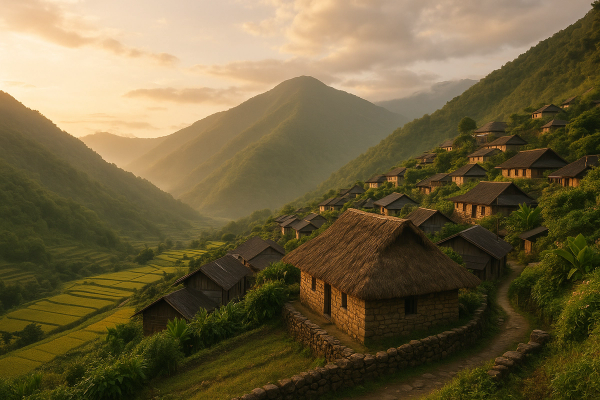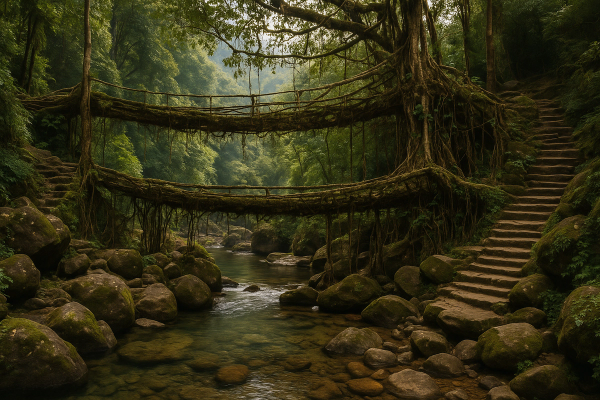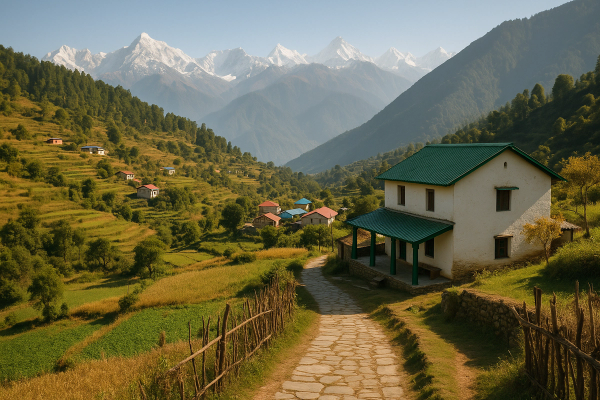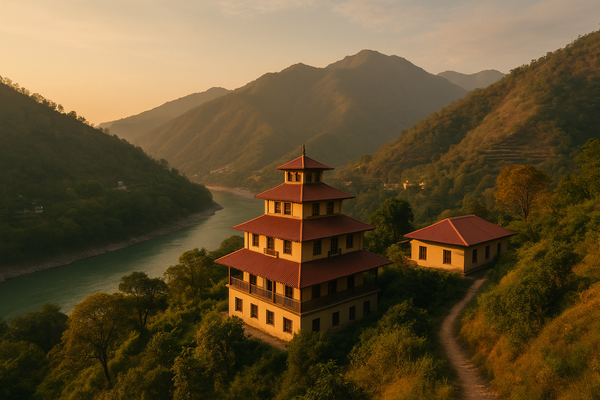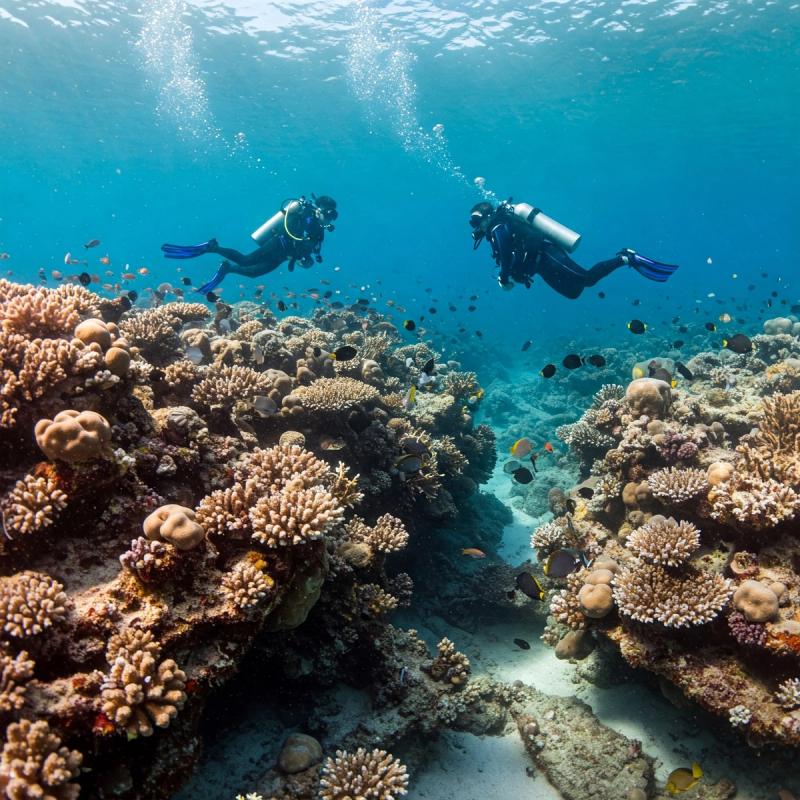
Dive In or Skim the Surface? Scuba Diving vs. Snorkeling in Egypt's Dazzling Red Sea#
Imagine floating weightless, sunlight dappling through crystal-clear turquoise water, surrounded by a kaleidoscope of fish darting through vibrant coral gardens. This isn't a fantasy; it's a typical Tuesday in Egypt's Red Sea. This legendary body of water, nestled between Africa and Asia, is a global hotspot for underwater enthusiasts. But when faced with its staggering beauty, the big question arises: Should you scuba dive or snorkel in the Red Sea, Egypt? Both offer incredible windows into this aquatic paradise, but they provide vastly different experiences. As someone who's spent countless hours mesmerized by these waters, let me guide you through choosing the adventure that's perfect for you.¶
This guide dives deep (pun intended!) into comparing scuba diving vs. snorkeling in the Red Sea, Egypt, covering everything from the thrill factor and costs to the skills needed and the best spots like Sharm El Sheikh and Dahab. Whether you're a seasoned water baby or just testing the waters, we'll help you decide how best to unlock the magic beneath the waves.¶
Why is the Red Sea So Utterly Magical?#
What makes this sliver of ocean so special? The Red Sea is a unique geological marvel – a relatively narrow, deep basin with high salinity and minimal river runoff, resulting in exceptionally clear waters and thriving coral reef systems. It boasts over 1,200 species of fish (around 10% endemic, found nowhere else!), vibrant soft and hard corals, dramatic drop-offs, and fascinating wrecks.¶
For Middle East travelers and adventurers from across the globe (especially popular with visitors from the USA, UK, India, and Europe), its accessibility, year-round sunshine, and well-developed tourism infrastructure along the Egyptian coast make it an irresistible destination for adventure travel and water sports.¶
When to Visit: Timing Your Red Sea Underwater Adventure#
Honestly, the Red Sea offers fantastic conditions almost year-round, but the 'best' time depends on your priorities. I've visited in different seasons, and each has its charm.¶
Peak Season: Spring (March-May) & Autumn (September-November)#
Many consider these shoulder seasons the absolute sweet spot. Air temperatures are warm and pleasant (25-35°C / 77-95°F), and water temperatures are comfortable for both snorkeling and diving (23-28°C / 73-82°F). Visibility is generally excellent.¶
- Pro: Ideal balance of warm air and water temps, excellent visibility.
- Con: Can be popular, so book accommodation and dive trips in advance. Prices might be slightly higher than low season.
Summer Sizzle (June-August)#
Expect hot sunshine! Air temperatures soar (35-40°C+ / 95-104°F+), but the water is deliciously warm (28-30°C / 82-86°F), perfect for long sessions without a thick wetsuit. This is also peak season for potential whale shark sightings further south (like near Marsa Alam).¶
- Pro: Warmest water, great for those who chill easily. Potential for specific pelagic sightings.
- Con: Can be very hot on land and on boats. Higher tourist volume, especially families.
Winter Sun (December-February)#
A fantastic escape from colder climates. Air temperatures are mild (20-25°C / 68-77°F), but the water cools down (21-23°C / 70-73°F). You'll definitely want a wetsuit (at least 5mm for diving, maybe a shorty for hardy snorkelers). Visibility remains good, and crowds are generally thinner.¶
- Pro: Pleasant air temperatures, fewer crowds, often lower prices.
- Con: Cooler water requiring thicker wetsuits. Occasional windy days can affect boat trips.
My Tip: I personally love visiting in October. The summer heat has subsided, the water is still beautifully warm from the summer months, and the crowds are manageable.
Getting There & Getting Around the Red Sea Riviera#
Reaching Egypt's Red Sea coast is straightforward, especially for the main hubs.¶
- By Air: Sharm El Sheikh International Airport (SSH) and Hurghada International Airport (HRG) are the primary gateways. They receive direct flights from many European and Middle Eastern cities. Internal flights from Cairo (CAI) are frequent and relatively inexpensive. Carriers like EgyptAir, EasyJet, Turkish Airlines, and charter airlines are common options.
- Visa: Many nationalities (including USA, UK, EU) can obtain a visa on arrival at the airport (currently $25 USD, but always check the latest official government requirements before your trip). Some nationalities need to apply in advance. A free 15-day Sinai-only permit is available if you fly into Sharm El Sheikh and stay within the South Sinai resorts, but this won't cover trips to Ras Mohamed by boat or mainland Egypt.
- Ground Transport: Buses connect Cairo and other major cities to Red Sea towns like Sharm, Dahab, and Hurghada. They are affordable but can be long journeys (6-9+ hours from Cairo).
- Local Transport: Within towns like Sharm El Sheikh and Dahab, blue-and-white minibuses (microbuses) are the cheapest way to get around fixed routes. Taxis are plentiful – agree on the fare before starting your journey or insist on the meter (if available/working). Ride-sharing apps like Careem (an Uber subsidiary) operate in some areas like Sharm. For diving and snorkeling, boat trips organised by dive centres or tour operators are standard.
Traveler's Insight: Don't be afraid to use the local microbuses in Dahab or Sharm, especially for short hops along the main roads. Just flag one down, tell the driver your destination (or a major landmark), and pay a small fixed fare upon exiting. It's an experience!
Where to Stay: Coastal Bases for Every Budget#
The Egyptian Red Sea caters to all travel styles, from backpackers to luxury seekers.¶
Sharm El Sheikh#
Known for its upscale resorts, lively nightlife (Naama Bay), and access to world-class dive sites like Ras Mohamed and Tiran Island. Offers a vast range of accommodation.¶
- Naama Bay: The bustling heart, lots of restaurants, bars, shops, and hotels. Can be noisy.
- Shark's Bay / Nabq Bay: More modern resort areas, often with private beaches and jetties. Generally quieter.
- Old Market (Sharm Old Town): Offers a more local feel, budget guesthouses, and fantastic cheap eats.
Dahab#
About an hour north of Sharm, Dahab has a completely different vibe – much more laid-back, bohemian, and budget-friendly. Famous for shore diving/snorkeling (Lighthouse, Eel Garden, Blue Hole).¶
- Assalah: The main town area with local shops and budget accommodation.
- Masbat Bay (Lighthouse Area): Waterfront restaurants, dive centres, guesthouses, and camps. The social hub.
- Mashraba: South of Masbat, slightly quieter hotels and camps.
| Location | Vibe | Price Range (per night, approx.) | Best For |
|---|---|---|---|
| Sharm El Sheikh (Naama Bay) | Lively, Resort-Focused, Nightlife | $$ - $$$$ | Package tourists, nightlife lovers, families |
| Sharm El Sheikh (Old Market) | Local Feel, Budget Options | $ - $$ | Budget travelers, authentic experiences |
| Dahab (Masbat/Lighthouse) | Bohemian, Laid-Back, Waterfront | $ - $$$ | Backpackers, divers/snorkelers, independent travelers |
| Dahab (Assalah) | Local Town, Very Budget | $ | Long-term stays, budget immersion |
Scuba Diving vs. Snorkeling in the Red Sea: The Ultimate Showdown#
Okay, let's get to the heart of it. Both activities let you witness the Red Sea's underwater spectacle, but they cater to different desires, budgets, and skill levels. Here's a breakdown to help you choose your Red Sea water sports adventure:¶
1. The Experience: Immersion vs. Observation#
Snorkeling#
Snorkeling is about effortless surface exploration. You float gently, peering down through your mask into the vibrant world below. It's like having a VIP window seat to the reef's bustling activity. You hear the crackle of parrotfish munching on coral, see shoals of colourful fish flit by, and feel the sun on your back. It’s accessible, relaxing, and instantly rewarding, especially in the shallow, sunlit coral gardens teeming with life.¶
Perfect for: Families with young children, less confident swimmers, those wanting a quick and easy glimpse underwater, enjoying shallow reefs.
Scuba Diving#
Scuba diving is about becoming part of the underwater world. Breathing underwater, weightless, you move in three dimensions. You can hover motionless beside a giant gorgonian fan, glide alongside a majestic sea turtle, explore the eerie corridors of a sunken wreck, or peer over the edge of a dramatic drop-off into the deep blue. The feeling of immersion is total. It's a more involved, sometimes challenging, but profoundly moving experience.¶
Perfect for: Thrill-seekers, those craving deeper exploration, wreck enthusiasts, anyone wanting to feel truly immersed in the marine environment.
2. Required Skill & Training: Dip In vs. Deep Dive#
Snorkeling#
Minimal skills required! If you can float and are comfortable putting your face in the water, you can snorkel. Basic swimming ability helps, but life jackets are often available on boat trips. You just need to learn how to clear your mask and snorkel – easily taught in minutes.¶
Scuba Diving#
This requires formal training and certification. The most common entry-level course is the PADI Open Water Diver (or equivalent from SSI, NAUI, etc.). This typically involves:¶
- Theory sessions (e-learning or classroom).
- Confined water sessions (pool or shallow, calm sea) to practice essential skills.
- Four open water dives to demonstrate mastery.
The course usually takes 3-4 days. While not overly difficult, it requires commitment and a basic level of health and fitness (you'll fill out a medical questionnaire). You can also do a 'Discover Scuba Diving' (DSD) or 'Intro Dive' – a closely supervised, shallow dive experience without full certification, great for trying it out.¶
3. Cost Breakdown: Wallet-Friendly vs. Investment#
Your budget will definitely play a role in the scuba diving vs. snorkeling Red Sea Egypt decision.¶
| Activity | Typical Cost Element | Approximate Price (USD) |
|---|---|---|
| Snorkeling | Gear Rental (Mask, Snorkel, Fins) / Day | $5 - $15 |
| Snorkeling | Guided Boat Trip (incl. lunch, multiple spots) | $30 - $60 |
| Scuba Diving | Discover Scuba Diving / Intro Dive (1 dive) | $60 - $100 |
| Scuba Diving | PADI Open Water Course (3-4 days) | $350 - $500+ |
| Scuba Diving | Certified Dive (1 dive, shore-based) | $30 - $50 |
| Scuba Diving | Certified Dive (1 dive, boat-based) | $40 - $70 |
| Scuba Diving | Full Gear Rental / Day | $25 - $50 |
| Scuba Diving | Dive Boat Trip (2 dives, incl. tanks, weights, lunch) | $70 - $120 |
Note: Prices are approximate and vary between locations (Dahab is often cheaper than Sharm) and operators. Packages (multiple dives/days) usually offer better value.¶
4. Marine Life Visibility & Access: Surface Views vs. Depth Exploration#
Snorkeling#
Red Sea visibility is often phenomenal (20-40m+ / 65-130ft+), so snorkelers get amazing views! You'll see the highest density of coral and colourful reef fish in the sunlit shallows (0-10m / 0-33ft). Expect butterflyfish, angelfish, parrotfish, anemonefish (Nemo!), wrasses, maybe even turtles surfacing for air or rays cruising over sandy patches. Access is easy – many reefs are accessible directly from shore or via short boat rides to shallow moorings.¶
Scuba Diving#
Diving unlocks access to deeper wonders. You can explore beyond the shallow reef crests, navigate canyons and swim-throughs, visit wrecks lying deeper than snorkelers can reach (like the famous SS Thistlegorm), and hover over dramatic walls plunging into the abyss. This increases chances of seeing larger species that prefer deeper water or specific habitats – reef sharks (whitetip, grey), larger Napoleon wrasse, eagle rays, moray eels hiding in crevices, and unique coral formations. Marine life visibility remains excellent at depth.¶
5. Effort & Fitness: Gentle Float vs. Geared Up#
Snorkeling#
Generally low exertion. Floating takes minimal effort, though swimming against currents or for long distances requires some fitness.¶
Scuba Diving#
More physically demanding. You need to carry your gear (tank, weights, BCD) on land/boat, manage buoyancy underwater, and potentially swim against currents at depth. Reasonable fitness is recommended.¶
6. Time Commitment: Quick Dip vs. Dedicated Day#
Snorkeling#
Highly flexible. You can snorkel for 20 minutes off the beach or spend a full day on a boat trip visiting multiple sites.¶
Scuba Diving#
Requires more planning. Boat trips are typically full-day affairs (departure around 8-9 am, return 4-5 pm) to allow for travel time, two dives, and mandatory surface intervals between dives. Shore dives offer more flexibility but still require time for gearing up and safety checks.¶
Best Red Sea Spots: Sharm El Sheikh vs. Dahab - A Tale of Two Towns#
While the entire Egyptian Red Sea coast offers great underwater opportunities, Sharm El Sheikh and Dahab are the most popular bases, each with a distinct character.¶
Sharm El Sheikh: The Resort Powerhouse#
Sharm is the larger, more developed resort town. It offers unparalleled access to two world-renowned marine parks:¶
- Ras Mohamed National Park: Located at the southern tip of the Sinai Peninsula, famous for Shark Reef and Yolanda Reef – stunning walls, incredible coral density, massive schools of fish (snappers, batfish, barracuda), and the quirky cargo of the Yolanda wreck (toilets!). Accessible primarily by boat.
- Straits of Tiran: Four legendary reefs (Jackson, Woodhouse, Thomas, Gordon) known for strong currents, pristine corals, potential pelagic encounters (hammerheads in summer at Jackson), and dramatic underwater landscapes. Accessed by boat.
Sharm has dozens of professional dive centres catering to all levels, from beginners taking their first breaths underwater to experienced tech divers. Snorkeling trips to Ras Mohamed and Tiran are also extremely popular and rewarding.¶
Choose Sharm if: You want resort comforts, easy access to iconic boat dive sites, a wide range of operators, and buzzing nightlife.
Dahab: The Laid-Back Diving Mecca#
Dahab offers a completely different, more relaxed atmosphere. It's famed for its incredible shore diving and snorkeling sites, meaning you can often gear up and walk straight into world-class underwater environments.¶
- The Blue Hole: A legendary (and infamous) submarine sinkhole dropping to over 100m. Snorkelers can explore the vibrant shallow reef around the rim ('The Bells' entry point is stunning). Experienced technical divers explore its depths (requires specific training and caution).
- The Canyon: Another iconic shore dive – a cavern system starting around 12m and opening into a larger chamber. Accessible to recreational divers.
- Lighthouse Reef: Right in the centre of Dahab's Masbat Bay, incredibly easy access for both divers and snorkelers. Surprisingly rich marine life, great for training and night dives.
- Eel Garden: Known for its colony of garden eels swaying in the sandy bottom, plus beautiful reef patches.
Dahab is generally more affordable than Sharm and attracts a younger, more independent crowd. It's also a hub for freediving and technical diving.¶
Choose Dahab if: You prefer a relaxed, bohemian vibe, love shore diving/snorkeling convenience, are on a tighter budget, or are interested in freediving/technical diving.
Other Red Sea Gems: Don't forget Hurghada (great for wrecks like the Salem Express and access to southern sites) and Marsa Alam (further south, quieter, famous for dugong sightings at Abu Dabbab and oceanic whitetip sharks at Elphinstone Reef).¶
Beyond the Blue: Surface Intervals & Sinai Adventures#
Egypt's Red Sea isn't just about being underwater! Give your gills a rest and explore:¶
- Desert Safaris: Experience the stark beauty of the Sinai desert via quad bike, camel ride, or jeep tour. Often includes a visit to a Bedouin camp for tea and dinner under the stars.
- St. Catherine's Monastery: A UNESCO World Heritage site located at the foot of Mount Sinai. A long day trip, but historically and culturally significant.
- Relaxation: Simply enjoy the sunshine! Lounge by the pool, find a beachside cafe in Dahab, or stroll through Sharm's Old Market.
- Local Markets (Souks): Practice your bargaining skills for souvenirs, spices, and local crafts in Sharm's Old Market or Dahab's Assalah district.
Fueling Your Dives: Tastes of the Red Sea#
While resort food is plentiful, seek out local flavors:¶
- Fresh Seafood: Naturally! Many restaurants offer grilled fish, calamari, and shrimp, often sold by weight. Ask for the catch of the day.
- Egyptian Staples: Find local eateries (especially in Sharm's Old Market or Dahab's Assalah) serving Koshari (a carb-heavy mix of rice, lentils, pasta, chickpeas, topped with tomato sauce and fried onions – surprisingly delicious!), Ful Medames (slow-cooked fava beans, a breakfast staple), and Ta'ameya (Egyptian falafel made with fava beans).
- Bedouin Tea (Shai): Sweet, strong black tea often brewed with herbs like habak (mint) or marmaraya (sage). A staple of Bedouin hospitality.
Must-Try: Enjoying dinner at one of the low-key, cushion-strewn restaurants lining the shore in Dahab's Masbat Bay as the sun sets. Simple grilled fish never tasted so good.
Practical Tips for Your Red Sea Adventure#
A little preparation goes a long way for a smooth trip.¶
Packing Essentials:#
- Multiple Swimsuits (they take time to dry!)
- Rash Guard / UV Protection Shirt (essential for sun protection while snorkeling/on boats)
- High SPF (Reef-Safe) Sunscreen - Crucial! The sun is intense.
- Hat & Sunglasses
- Reusable Water Bottle (stay hydrated!)
- Underwater Camera (or waterproof phone case)
- Dry Bag (for boat trips)
- Your Own Mask & Snorkel (optional, but guarantees fit and hygiene)
- For Divers: Certification Card(s), Logbook, Dive Computer.
- Lightweight Clothing (cotton, linen), plus a light jacket/sweater for evenings (especially in winter).
- Modest Clothing (cover shoulders/knees) for visiting towns/markets.
- Basic First-Aid Kit (plasters, antiseptic wipes, pain relievers, motion sickness medication if needed).
Budget Considerations:#
Egypt remains relatively affordable, but costs vary.¶
- Dahab is generally cheaper than Sharm El Sheikh for accommodation, food, and diving.
- Budget Traveler (hostels/camps, local food, shore snorkeling/diving): $40-70 USD/day
- Mid-Range (guesthouses/budget hotels, mix of local/tourist restaurants, boat trips): $70-150 USD/day
- Comfort/Luxury (resorts, hotel restaurants, frequent diving/tours): $150+ USD/day
- Currency: Egyptian Pound (EGP). ATMs are widely available. Credit cards accepted in resorts/larger establishments, but cash is king for smaller shops, taxis, and tips.
Safety First:#
- Dive Safety: Choose reputable dive centres (check reviews, PADI/SSI affiliation). Listen to briefings. Check your gear. Dive within your limits and training. Consider dive insurance (like DAN).
- Sun Protection & Hydration: Essential. Drink plenty of water.
- Marine Life: Look, don't touch! Coral is fragile and alive. Avoid touching any marine creatures.
- Solo Travel: Generally safe in tourist areas, especially Dahab which has a strong traveler community. Standard precautions apply.
- Petty Theft: Be aware of your belongings, especially in crowded markets.
Local Etiquette & Customs:#
- Dress Modestly outside beach resorts, particularly in markets or villages (cover shoulders and knees).
- Haggling is expected in souks, but do it politely and with a smile.
- Tipping (Baksheesh) is customary for service (dive boat crews, restaurant staff, hotel cleaners). Small amounts are appreciated.
- Ask permission before taking photos of people.
- Learn a few Arabic words: Shukran (Thank you), Salam (Hello), La (No), Aiwa (Yes).
Connectivity:#
Wi-Fi is common in hotels and cafes but can be slow or unreliable. Consider getting a local SIM card (Vodafone, Orange, Etisalat) at the airport for better data access.¶
Protecting Paradise: Responsible Travel in the Red Sea#
The Red Sea's ecosystem is magnificent but fragile. As visitors, we have a responsibility to protect it.¶
- Choose Eco-Conscious Operators: Look for dive centres and tour operators with clear environmental policies.
- NO Touching Coral: Even a slight touch can damage or kill coral polyps.
- Maintain Buoyancy Control (Divers): Avoid kicking up sand or bumping into the reef.
- Don't Feed the Fish: It disrupts natural feeding behaviours and ecosystem balance.
- Use Reef-Safe Sunscreen: Oxybenzone and octinoxate are harmful to corals. Look for mineral-based sunscreens (zinc oxide, titanium dioxide).
- Pack It In, Pack It Out: Dispose of all trash properly, especially on boats. Avoid single-use plastics where possible.
- Respect Marine Life: Observe from a distance, never chase or harass animals.
- Support Local Communities: Eat at local restaurants, buy authentic crafts, hire local guides.
Our underwater experiences depend entirely on the health of the reef. Let's all be ambassadors for its protection.
The Verdict: Scuba Diving or Snorkeling - Which Red Sea Adventure Calls to You?#
So, back to the big question: Scuba Diving vs. Snorkeling in the Red Sea, Egypt? There’s no single right answer, only the right answer for you.¶
Choose Snorkeling if: You want an easy, affordable, and instantly accessible way to see incredible shallow reefs and colourful fish. It's perfect for families, casual observers, and those less confident in the water. You can still have breathtaking experiences!¶
Choose Scuba Diving if: You crave deeper immersion, want to explore wrecks and walls, feel the unique sensation of breathing underwater, and are willing to invest the time and money in training and gear. The feeling of exploring the underwater world as an 'insider' is truly unforgettable.¶
Many people start with snorkeling and fall so deeply in love with the Red Sea's magic that they inevitably take the plunge into scuba diving later. Others are perfectly content skimming the beautiful surface. Whichever you choose, the Egyptian Red Sea promises an adventure travel experience filled with vibrant life, stunning scenery, and memories to last a lifetime.¶
Have you explored the underwater world of the Red Sea? Which do you prefer – scuba diving or snorkeling? Share your experiences and tips in the comments below! Or, if you're planning your Egyptian adventure, feel free to ask any questions. Happy travels and happy bubbles! Explore more travel guides and tips¶





